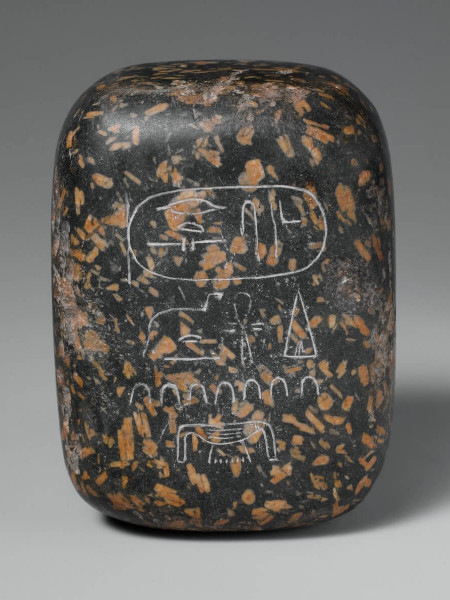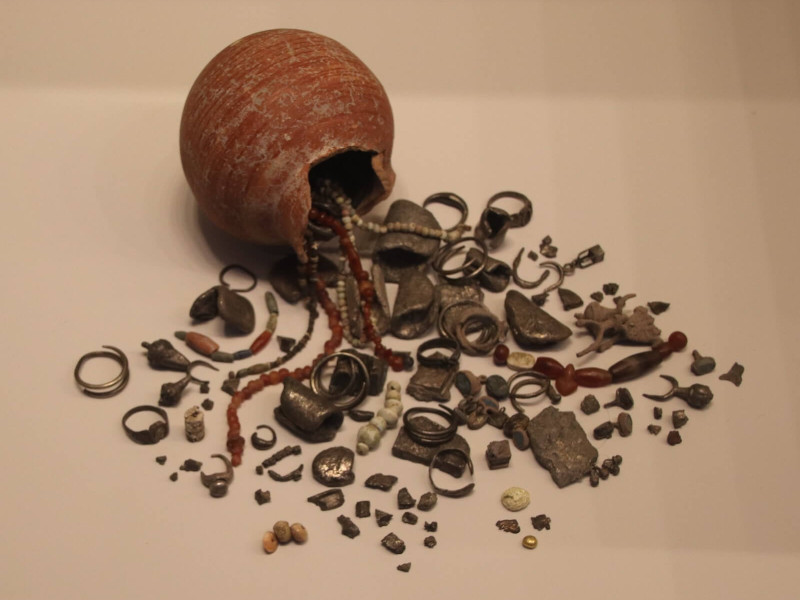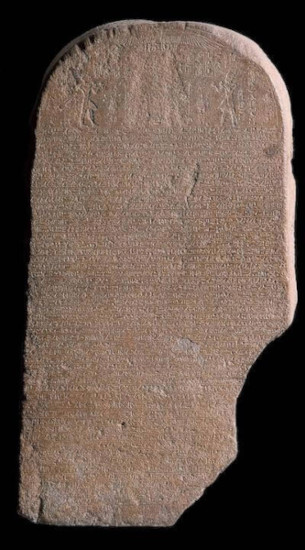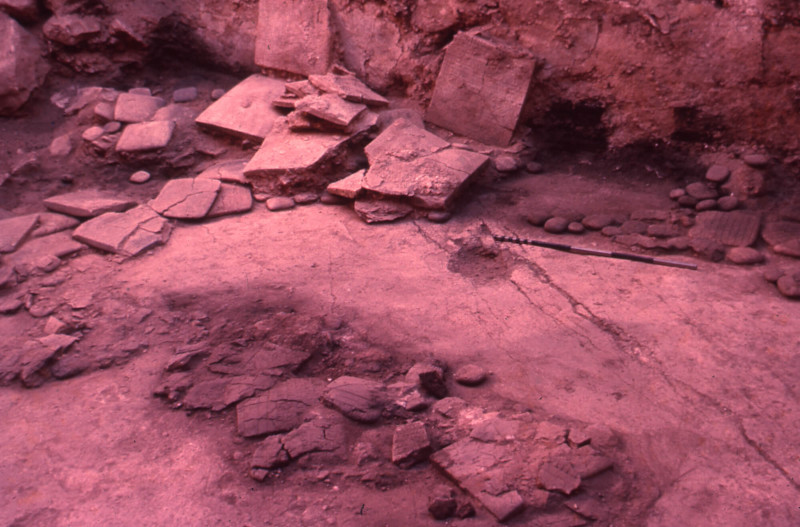Understanding Trade and Power in Early Egypt: A Geopolitical Approach
By Juan Carlos Moreno García
In recent years, several studies have revealed the complex networks of exchanges and circulation of peoples, goods, ideas, and techniques that traversed ancient Eurasia. Far from being a phenomenon inaugurated by the first empires that integrated parts of this vast area (Assyria, Achaemenid Persia, Alexander the Great, Rome), its earlier manifestations can be traced back originally to prehistoric times and, mainly, during the Early Bronze Age. Obsidian, for instance, arrived in Egypt from the southern Red Sea. At the same time, some pottery found in the tomb of U-j, a Predynastic king buried at Abydos, originally contained wine imported from southern Palestine. Finally, Hierakonpolis, the earliest royal center, also situated in Upper Egypt, shows that exotic animals coming from regions situated far away were buried in ceremonial areas (Fig. 1).
Fig. 1: Reproduction of the Palette of King Narmer, the first pharaoh of a unified Egypt. Original dated to ca. 3100 BCE. Royal Ontario Museum. Photo: Daderot, via Wikimedia Commons. CC0 1.0 Public Domain.
This evidence represents an excellent basis for understanding the particularities and limits of Egypt's integration within the Afro-Eurasian sphere of contacts. On the one hand, much of the preserved vestiges correspond to rare luxury goods conveying notions such as prestige, long-range contacts, and exoticism that enhanced the status of their owners. On the other hand, such evidence suggests a particular specialization, as if Egypt's primary role in international trade consisted of providing exotic coveted goods of African origin (gold, ivory, ebony, aromatic plants) to other parts of the Near East. The much later Amarna letters epitomize this situation when Near Eastern kings and Egyptian pharaohs claimed and bargained for a supply of such products. But is this picture accurate?
Indeed, official sources produced by kings and high dignitaries emphasize official missions dispatched abroad, exchanges of gifts between royal courts, and the circulation of prestige items. However, this is only part of the story. Other evidence, often scattered in administrative records, private letters, and epigraphic references, indicates that exchanges were also promoted by private initiatives.
In recent years, several archives from Near Eastern localities like Ebla or Ugarit have produced invaluable evidence about the activities and contacts led by Egyptians living there who carried out their business partly at the service of institutions and partly as purely private initiatives. Archaeology contributes to this picture too. It shows that most of the exchanges between Egypt and its neighbors consisted of modest goods, like fish, grain, and textiles. Archaeology also provides indirect evidence about such contacts and Egypt's integration into broader spheres of exchange. For example, the diffusion of weight systems compatible with those in use in the Near East, the Aegean, and beyond suggests contacts on a large scale developed not by royal courts but by merchants (Fig. 2). Evidence of shared weight systems, cult practices (like protective figurines), and units of value based on silver corroborates the extent and intensity of such contacts and their autonomy concerning institutions.
This situation helps us understand a counter-intuitive fact: trade and commercial facilities sometimes flourished when monarchies collapsed. The diffusion of pottery or the occasional discovery of shipwrecks confirms that the bulk of trade was oriented toward the satisfaction of increasing demand. Thus, cheap imitations of prestige goods, the circulation of scrap metal, or the diffusion of former elite tastes and fashions among larger social sectors may underlie robust yet poorly documented changes in the circulation of goods, the organization of trade, and the modalities of craft production across vast distances. Hence, commercial integration was indissolubly linked to diversification. Definitively, "diplomatic" archives only tell part of the story.
Consequently, the recurrent episodes of crisis, when states and palatial systems collapsed, induced considerable changes to cope with such demand. One can think, for instance, of tomb plundering episodes in search for precious metals, copper, and bronze at the end of the second millennium BCE in many areas of the Eastern Mediterranean, when the circuits operated by the states were no longer practical. Despite the decline in state-driven exchange of goods, the appetite for metals had hardly declined at all. The famous tomb robbery papyri provide detailed evidence about an activity that put in the hands of traders and political authorities vast quantities of gold, copper, and bronze. During this period, several hoards discovered in the Levant show that silver was debased, and only the restoration of flows of this metal from the Aegean and other regions reintroduced good quality silver into the economic circuits (Fig. 3). Not by chance, temples in Egypt and the Near East guaranteed then the quality of the silver into circulation.
So, if trade and commercial initiatives were partly in the hands of institutions and partly controlled by private individuals, a crucial question emerges: what was the impact of trade and wealth accumulation on the organization of power in Egypt?
A subtle interplay of interests and initiatives brought kings, provincial magnates, and individuals together. It resulted in different political landscapes, from a unified monarchy to the coexistence of regional kingdoms or the foundation of empires that tried to "capture" and monitor flows of wealth crossing vast areas.
Thus, Thutmose III claimed in his stela at Gebel Barkal that not only foreign tribute but also "everything that comes before My Majesty through trade is his (=Amun)" (Fig. 4). His predecessor, Queen Hatshepsut, said in the inscriptions that described the mission she sent to the land of Punt:
The God's Land has not been entered, and the Myrrh-terraces were unknown to Egyptians. It was learned of by hearsay, from the stories of the ancestors. Exotic goods were brought, and these were brought from there to your fathers, the kings of Lower Egypt, from one to the other since the era of the ancestors, to the kings who were before, in return for many payments.
So, what Hatshepsut's ancestors obtained painfully, through many mediators ("from one to the other… in return for many payments"), she received now directly, thanks to a mission that linked producers and consumers directly, without such costly mediation. Bypassing rivals and capturing lucrative trade networks inspired the strategies of kings and provincial lords alike.
Perhaps Egypt's unification around 3100 BCE can be understood in these terms as the outcome of the initiatives led by some Upper Egyptian kings to eliminate rivals in Lower Nubia and Lower Egypt, control the Egyptian section of the Nile Valley, and create some short-lived trading outposts in the southern Levant. Later on, Egypt was involved in commercial operations in the southern Red Sea, Nubia, and the Levant, be it royal missions or caravans organized by local authorities, mainly at Elephantine. A complex logistic network aimed to facilitate the transport of goods and supply the expeditions, as exemplified by the settlements founded in the oasis of Dakhla or by the chain of royal centers — called ḥwt — created in Upper and Lower Egypt. However, the recent publication of a set of documents from Ebla in Syria (Fig. 5) shows that private traders operated partly at the service of these missions, partly following their own commercial interests. As for the leaders of Elephantine, they continued their commercial operations after the collapse of the monarchy at the end of the Old Kingdom, which occurred around 2160 BCE.
Fig. 5: Cuneiform tablets found in the royal palace at Ebla, ca. 2500 – 2360 BCE. Photo: Marlin Levin. Meitar Collection, The Pritzker Family National Photography Collection, The National Library of Israel. Public Domain.
An unexpected consequence was that the authorities appointed to manage the logistic centers that the monarchy created in the provinces began accumulating wealth. Later on, some became more independent, sought to control these economic circuits directly, and prescinded from the monarchy when their interests no longer aligned with those of the kings. Political fragmentation followed when Thebes and Coptos seceded from the monarchy, and Thebes emerged as an independent regional kingdom. This circumstance also means that negotiation between kings and local potentates produced a delicate balance of power, constantly renewed but obscured by narratives that proclaimed unilateral royal agency instead. Nubian leaders intervened in Egyptian affairs at the end of the third millennium BCE. A complex political web of alliances, military confrontation, and shifting loyalties finally concluded with Egypt's reunification around 2050 BCE. However, this issue was only possible because the new pharaohs co-opted part of the elites that had supported their rival Heracleopolitan kingdom — provided their interests were respected under the new monarchy.
To conclude, geopolitics marked the organization of power in Egypt durably, and trade was indissociable from this process, not only in the late third millennium BCE but also in other periods of Egypt's long history.
Juan Carlos Moreno García is a Research Director at CNRS (French National Centre for Scientific Research).
Further Reading:
Moreno García, J. C. 2017. "Trade and power in ancient Egypt: Middle Egypt in the late third/early second millennium BC." Journal of Archaeological Research 25/2, 87–132.
—. 2023. "Trade, statehood and configurations of power in ancient Egypt (Early-Middle Bronze Age)." In D. Candelora, N. Ben-Marzouk & K. M. Cooney (eds.), Ancient Egyptian Society: Challenging Assumptions, Exploring Approaches. Routledge, pp. 49–61.
—. 2023 "Pharaonic Egypt: A singular pathway to statehood in the Early Bronze Age." Old World. Journal of Ancient Africa and Eurasia 3, 1–31.
Sherratt, S. E. 2003. "The Mediterranean economy: 'Globalization' at the end of the second millennium BC." In W. Dever & S. Gitin (eds.), Symbiosis, Symbolism, and the Power of the Past: Canaan, Ancient Israel, and their Neighbors, from the Late Bronze Age through Roman Palaestina. Winona Eisenbrauns, pp. 37–62.
Warburton, D. A. 2018. "Prices and values: Origins and early history in the Near East." In K. Kristiansen, Th. Lindkvist & J. Myrdal (eds.), Trade and Civilisation. Economic Networks and Cultural Ties, from Prehistory to the Early Modern Era. Cambridge University Press, pp. 56‒86.
Wilkinson, T. 2014. Tying the Threads of Eurasia. Trans-regional Routes and Material Flows in Transcaucasia, Eastern Anatolia and West Central Asia, c. 3000-1500 BC. Sidestone Press.
-- Sent from my Linux system.





No comments:
Post a Comment